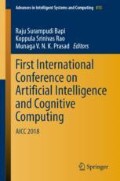Abstract
Credit rating of an institution or individual provides a suggestive financial picture and strength of the individual or the institution. It gives the lender the ability to visualize the potentiality to the extent to which credit could be availed by the institution or the individual. Default prediction on the sum of all attributes such as payment history is a common instrument used for generation of credit rating. This research is aimed at comparing the predictive accuracy of ensemble of base classifiers using techniques of bagging, boosting, and random forest in the prediction of default of credit card clients and suggesting the technique with the highest accuracy. Customers’ default payment in Taiwan dataset is used to build the model. ML classification algorithms such as K-nearest neighbor, Naive Bayesian, decision tree, and support vector machines are applied to create the base model on the dataset. Bagging, boosting, and random forest are applied on the dataset to generate model for prediction. The accuracy of each of the models for various degrees is tabulated. Information gain feature filter method is used to identify features with maximum entropy. The features with high entropy suggested by information gain together with ensemble techniques are used to build the new model. The accuracy of the new model is then tabulated. Boosting ensemble technique is found to have the best accuracy of prediction.
Access this chapter
Tax calculation will be finalised at checkout
Purchases are for personal use only
References
Leo Breiman. Bagging predictors. Machine learning, 24(2):123–140, 1996.
Hamed R Bonab and Fazli Can. A theoretical framework on the ideal number of classifiers for online ensembles in data streams. In Proceedings of the 25th ACM International on Conference on Information and Knowledge Management, pages 2053–2056. ACM, 2016.
Nan-Chen Hsieh and LunPing Hung. A data driven ensemble classifier for credit scoring analysis. Expert systems with Applications, 37(1):534–545, 2010.
Steven Finlay. Multiple classifier architectures and their application to credit risk assessment. European Journal of Operational Research, 210(2):368–378, 2011.
Gang Wang, Jinxing Hao, Jian Ma, and Hongbing Jiang. A comparative assessment of ensemble learning for credit scoring. Expert systems with applications, 38(1):223–230, 2011.
Gang Wang, Jian Ma, Lihua Huang, and Kaiquan Xu. Two credit scoring models based on dual strategy ensemble trees. Knowledge-Based Systems, 26:61–68, 2012.
AI Marqu´es, Vicente Garc´ıa, and Javier Salvador Sanchez. Exploring the behaviour of base classifiers in credit scoring ensembles. Expert Systems with Applications, 39(11):10244–10250, 2012.
AI Marqu´es, Vicente Garc´ıa, and Javier Salvador Sanchez. Two-level classifier ensembles for credit risk assessment. Expert Systems with Applications, 39(12):10916–10922, 2012.
Thomas G Dietterich. An experimental comparison of three methods for constructing ensembles of decision trees: Bagging, boosting, and random- ization. Machine learning, 40(2):139–157, 2000.
Jiawei Han, Jian Pei, and Micheline Kamber. Data mining: concepts and techniques. Elsevier, 2011.
Keinosuke Fukunaga. Introduction to statistical pattern recognition. Academic press, 2013.
Harry Zhang. The optimality of naive bayes. AA, 1(2):3, 2004.
S Rasoul Safavian and David Landgrebe. A survey of decision tree classifier methodology. IEEE transactions on systems, man, and cybernetics, 21(3):660–674, 1991.
Nello Cristianini and John Shawe-Taylor. An introduction to support vector machines and other kernel-based learning methods. Cambridge university press, 2000.
default of credit card clients data set. https://archive.ics.uci.edu/ml/datasets/default+of+credit+card+clients.
Author information
Authors and Affiliations
Corresponding author
Editor information
Editors and Affiliations
Rights and permissions
Copyright information
© 2019 Springer Nature Singapore Pte Ltd.
About this paper
Cite this paper
Emil Richard Singh, B., Sivasankar, E. (2019). Enhancing Prediction Accuracy of Default of Credit Using Ensemble Techniques. In: Bapi, R., Rao, K., Prasad, M. (eds) First International Conference on Artificial Intelligence and Cognitive Computing . Advances in Intelligent Systems and Computing, vol 815. Springer, Singapore. https://doi.org/10.1007/978-981-13-1580-0_41
Download citation
DOI: https://doi.org/10.1007/978-981-13-1580-0_41
Published:
Publisher Name: Springer, Singapore
Print ISBN: 978-981-13-1579-4
Online ISBN: 978-981-13-1580-0
eBook Packages: Intelligent Technologies and RoboticsIntelligent Technologies and Robotics (R0)

